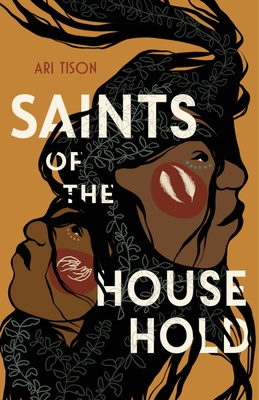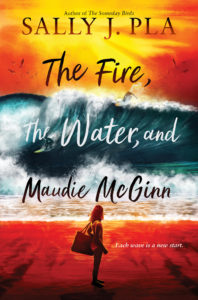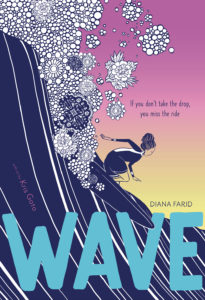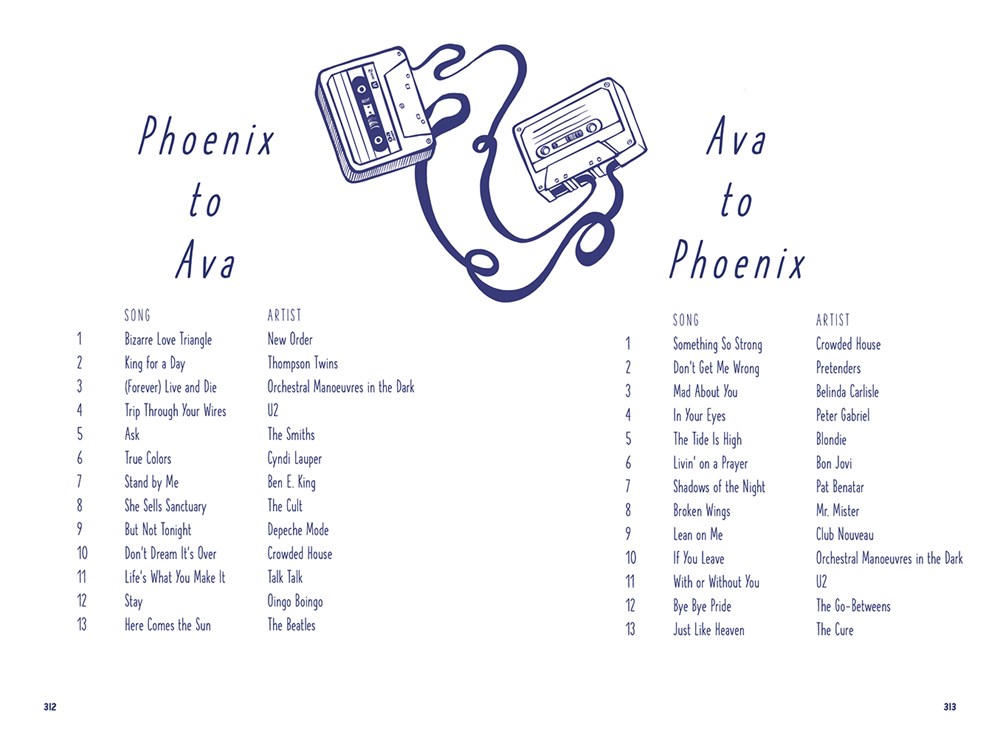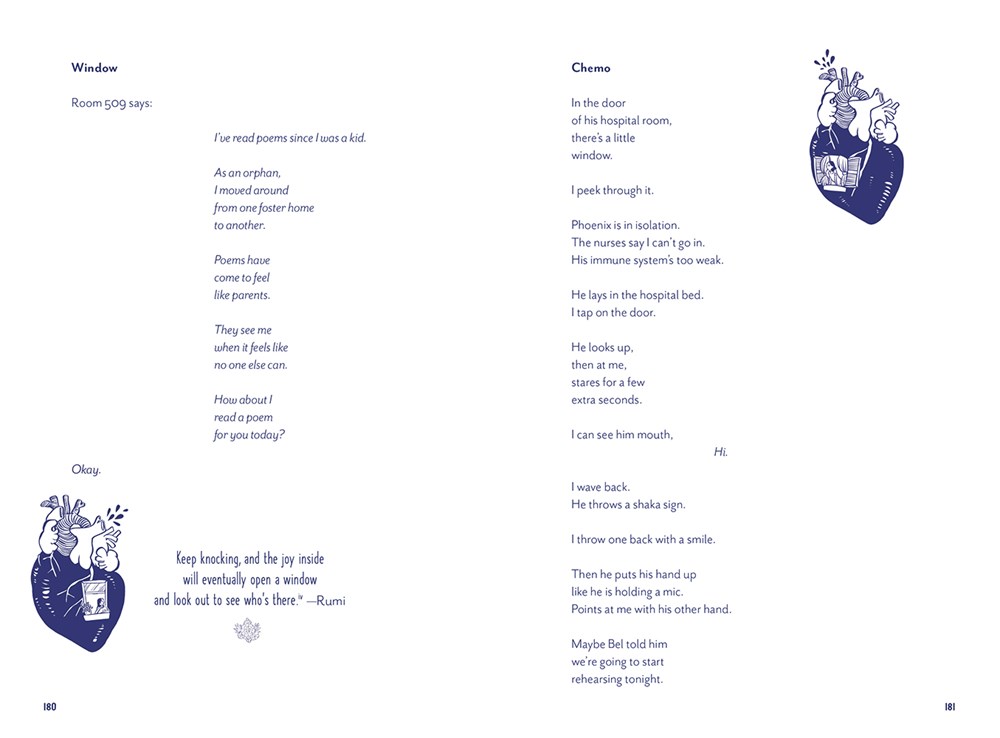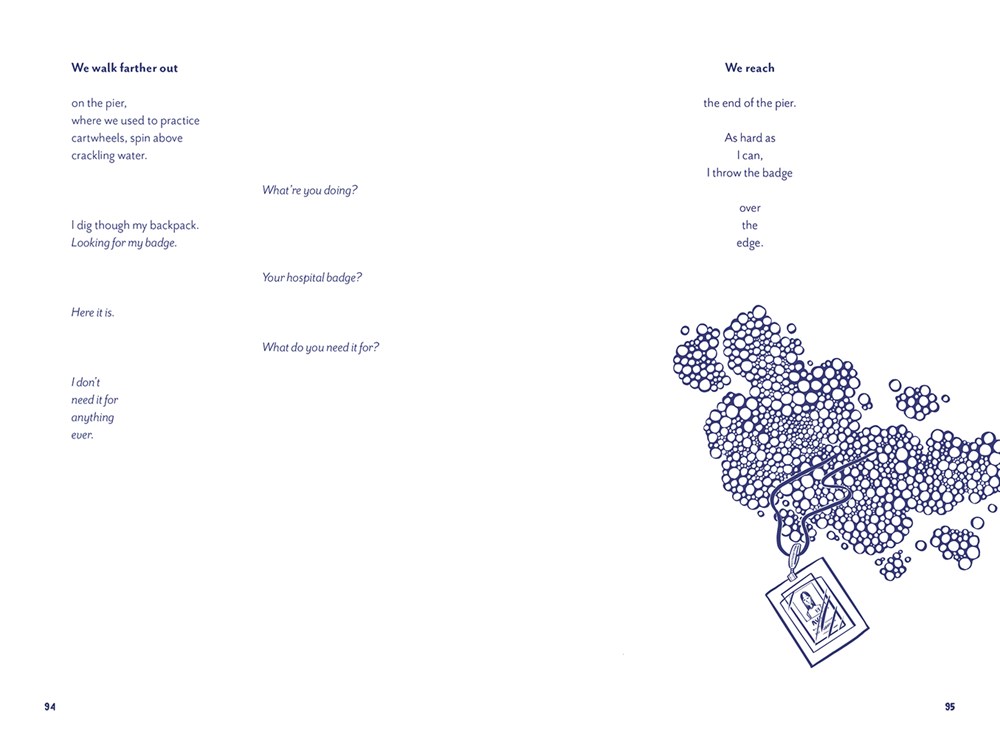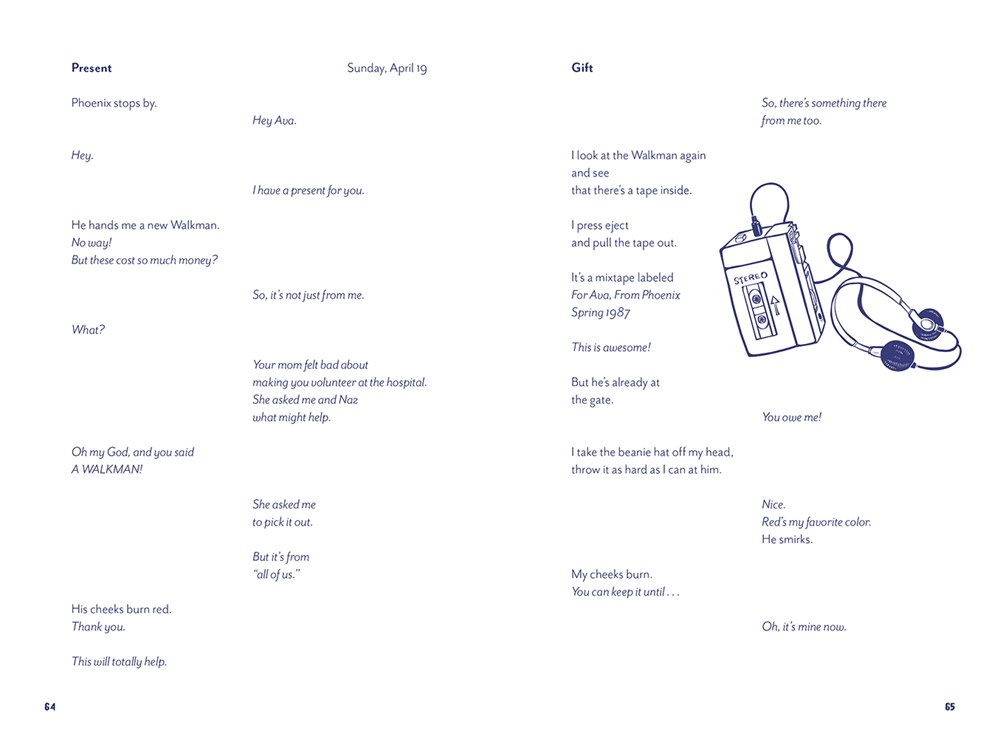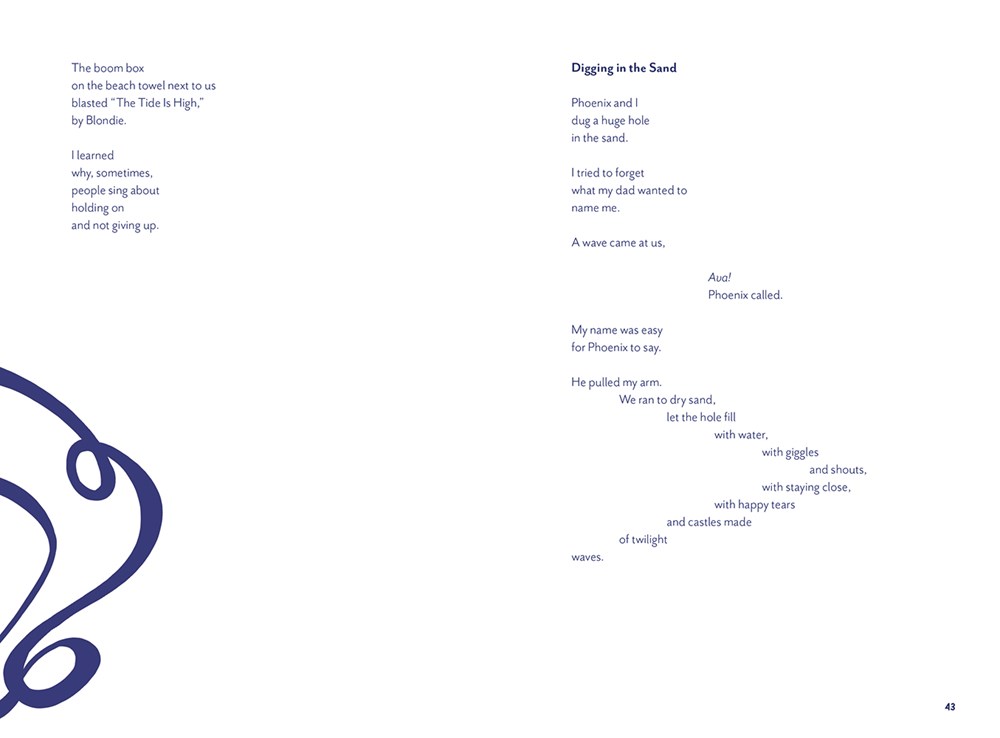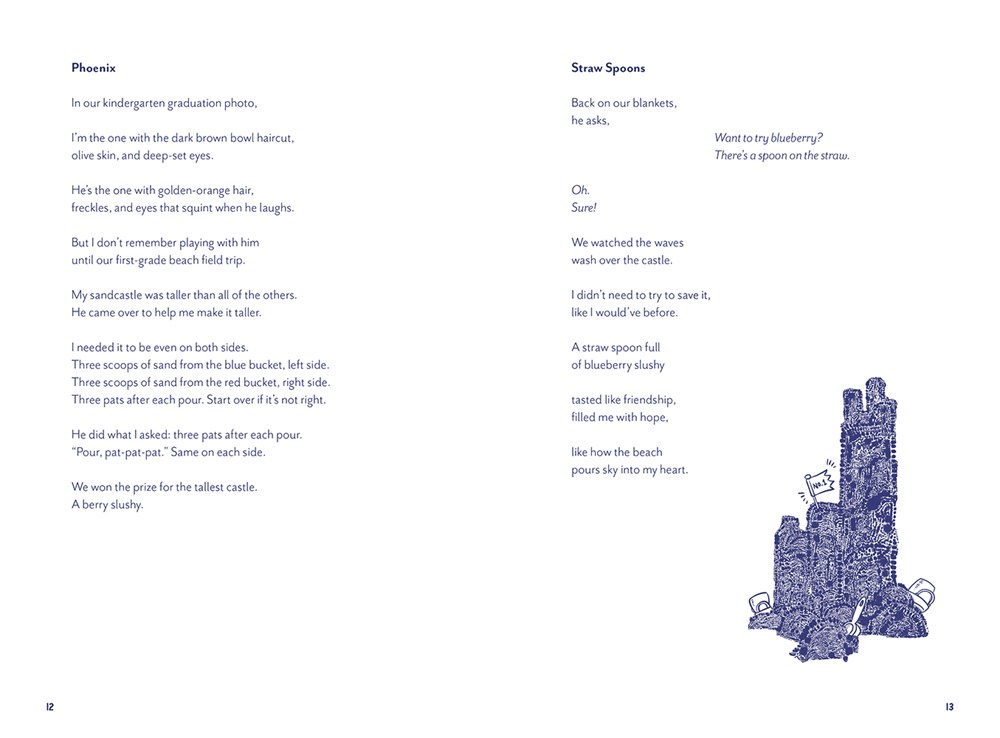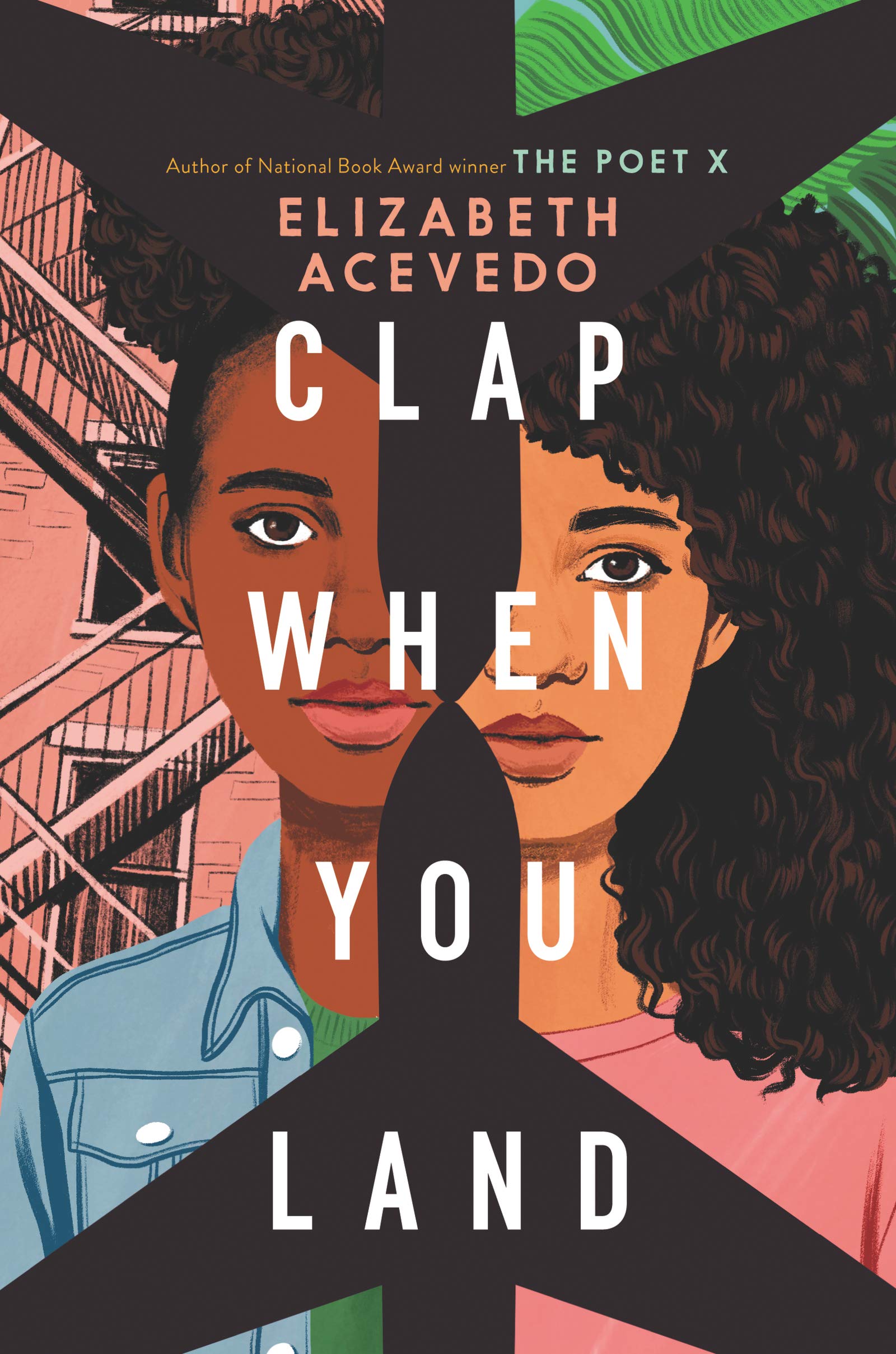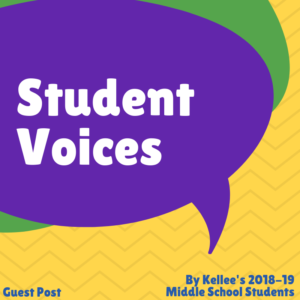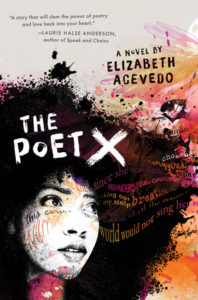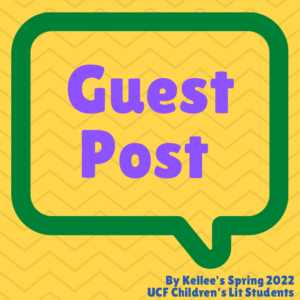
One of the assignments during my Spring Children’s Literature course at UCF was creating a mini-teaching guide for the books we read for book clubs. We started with picture books for practice then students created them in their book clubs each week.
Today, I am happy to share the classroom uses and discussion questions found by my UCF Elementary Education students for these six picture books.

Stand Tall, Molly Lou Melon
Author: Patty Lovell
Illustrator: David Catrow
Published August 27th, 2001 by G.P. Putnam’s Sons
Summary: Molly Lou Melon is short, clumsy, has buck teeth, and a voice that sounds like a bull-frog being squeezed by a boa constrictor… But she doesn’t mind.
Her grandmother has always told her to walk proud, smile big, and sing loud, and she takes that to heart.
But then Molly Lou has to start in a new school. A horrible bully picks on her on the very first day, but Molly Lou Melon knows just what to do about that…
Teachers’ Tools for Navigation:
- This book can be used to set a president within the classroom to advise at the beginning of the year that bullying is not okay.
- Teach about how having a positive attitude can affect the world around you
- Our attitude towards life determines life’s attitude towards us. – John Mitchell
- Have the students go into a small group to talk about what happens when another student is being bullied.
- Writing-in-role: Each student can discuss what they would do in Molly’s shoes with each encounter with the bully.
Discussion Questions:
- How would you feel if you were in Molly’s situation?
- What advice has a family member given you that has gotten you through a tough time?
- What are some things that you like about yourself?
- How do you think Molly was able to keep a positive attitude?
- How did the illustrations make you feel?
- What did you like about the story?
- What are some things you would have done if you heard Ronald making fun of Molly?
- If Molly had a negative attitude toward Ronald, how would have had the story turned out differently?
- How can you use this story in our classroom?
- If Molly had not received advice from her grandmother do you think she would have had such a positive attitude?
Recommended For:


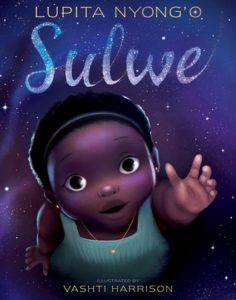
Sulwe
Author: Lupita Nyong’o
Illustrator: Vashti Harrison
Published October 15th, 2019 by Simon & Schuster Books for Young Readers
Summary: Sulwe has skin the color of midnight. She is darker than everyone in her family. She is darker than anyone in her school. Sulwe just wants to be beautiful and bright, like her mother and sister. Then a magical journey in the night sky opens her eyes and changes everything.
In this stunning debut picture book, actress Lupita Nyong’o creates a whimsical and heartwarming story to inspire children to see their own unique beauty.
Teachers’ Tools for Navigation: T
- Good as a read-aloud and book club book.
- A good book to introduce a discussion about skin color.
- Beginning BLM topic.
- Encourages children to be comfortable in their own skin.
- Encourages children to love themselves.
- Modern-day text.
- May be used during social studies instruction. Prompts discussion about skin color and different cultures. Introduces self and encourages students to reflect on their own family and community.
- After reading activity: Students may respond to the text by drawing a self-portrait of themselves. After drawing a self-portrait of themselves, they can share it with their peers and reflect on their own similarities and differences. The activity encourages students to recognize the importance of each member of their community.
Discussion Questions:
- What ideas do you think will be present in this text?
- How did the author use the title of this book in the text?
- How do you think the story will end?
- How do you think Sulwe feels regarding how her classmates are treating her? How do you feel about this treatment?
- What use of imagery sparked your imagination?
- What could happen to make this character feel a different way?
- What type of emotions do you feel during the daytime versus the nighttime? Explain why?
- How does the word choice contribute to the tension throughout the story and ultimately the theme at the end?
- What do you think the author wanted you to feel after reading this book?
- How do Sulwe’s feelings change from the beginning to the middle, to the end of the story?
- What evidence of organization do you see throughout the story?
Recommended For:



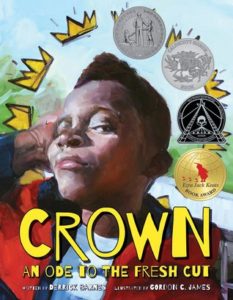
The Crown
Author: Derrick Barnes
Illustrator: Gordon C. James
Published October 10th, 2017 by Agate Bolden
Summary: The barbershop is where the magic happens. Boys go in as lumps of clay and, with princely robes draped around their shoulders, a dab of cool shaving cream on their foreheads, and a slow, steady cut, they become royalty. That crisp yet subtle line makes boys sharper, more visible, more aware of every great thing that could happen to them when they look good: lesser grades turn into As; girls take notice; even a mother’s hug gets a little tighter. Everyone notices.
A fresh cut makes boys fly.
This rhythmic, read-aloud title is a celebration of the way boys feel when they leave the barber’s chair.
Teachers’ Tools for Navigation: Notes about when the book would be useful in the classroom:
- To show feelings towards a certain moment in life.
- This can be used for language arts practice (events, plot, meaning).
- Asking students about a time where they felt a personal experience with something that they do often.
- Reflect on how they feel after receiving a haircut.
- Reflect on something that excites you, like the haircut in the story.
This book is best done as a read aloud and a book club book. The reason for this, is that Crown integrates great opportunities because it helps students to understand a character’s feelings written into text.
Discussion Questions:
- The boy in the story talks about his passion of having a haircut. When has there been a time where you felt passionate about something?
- How does the author in the story convey emotion through colors?
- What did you think the story might have been about?
- What do you think that the boy in the story is feeling when he enters the barber shop?
- If you could write a sequel to this book, what would it be about and why?
- What have you might have changed in this story?
- Has there been a time where you think you have gotten a nice haircut? Why or why not?
- Describe the boy’s feelings about getting a haircut? Why do you think this?
- The boy in the story felt confident and positive after getting a haircut. When was there a time where you felt confident and positive about something?
Recommended For:




The Day You Begin
Author: Jacqueline Woodson
Illustrator: Rafael López
Published August 28th, 2018 by Nancy Paulsen Books
Summary: National Book Award winner Jacqueline Woodson and two-time Pura Belpre Illustrator Award winner Rafael Lopez have teamed up to create a poignant, yet heartening book about finding courage to connect, even when you feel scared and alone.
There will be times when you walk into a room
and no one there is quite like you.
There are many reasons to feel different. Maybe it’s how you look or talk, or where you’re from; maybe it’s what you eat, or something just as random. It’s not easy to take those first steps into a place where nobody really knows you yet, but somehow you do it.
Jacqueline Woodson’s lyrical text and Rafael Lopez’s dazzling art reminds us that we all feel like outsiders sometimes-and how brave it is that we go forth anyway. And that sometimes, when we reach out and begin to share our stories, others will be happy to meet us halfway.
Teachers’ Tools for Navigation: After reading this book it would be best if students use this as a community building opportunity to celebrate their differences and learn about their peers. This book opens up a discussion about the lives that others live and how although they have a different background we should treat everyone with respect and encourage others to be true to themselves. After reading this book the classroom can do a reading analysis of the book to help establish classroom norms and expectations. This book would be best as a read aloud preferably towards the beginning of the school year. Afterwards this book may go to the classroom library. This book is interdisciplinary as it can be used in social studies to help explore different cultural backgrounds. The students can be given the opportunity to explore the different customs and regions brought up in the book to gain a deeper understanding of the world around them.
Discussion Questions:
- What is the symbolism behind rulers being present in the illustrations of the book?
- What differences did you notice in each of the characters?
- Why do you think it is important for us to celebrate our differences?
- What differences do you notice within your classmates or others around you?
- How did the students’ perceptions of each other change over time?
- Describe something that makes you unique compared to your classmates
- What is one way to support a classmate that feels isolated because of their differences?
- Why do you think Angelina felt less nervous towards the end of the book?
- What is the overall message of the story?
- Why do we notice the differences of our peers?
- Why are we different from those around us?
- Pick two different interactions in the story and write about you would change the characters behavior to be more respectful of their peers
Recommended For:




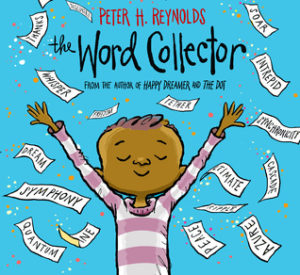
Word Collector
Author & Illustrator: Peter H. Reynolds
Published January 30th, 2018 by Orchard Books
Summary: Some people collect stamps.
Some people collect coins.
Some people collect art.
And Jerome?
Jerome collected words . . .
In this extraordinary new tale from Peter H. Reynolds, Jerome discovers the magic of the words all around him—short and sweet words, two-syllable treats, and multisyllable words that sound like little songs. Words that connect, transform, and empower.
From the creator of The Dot and Happy Dreamer comes a celebration of finding your own words—and the impact you can have when you share them with the world.
Teachers’ Tools for Navigation:
- This book would be useful during a read aloud when teaching about vocabulary. You can use the book as a good jump start into vocabulary. Seeing another child interested in learning words will catch the students attention and make them more interactive while learning vocab.
Discussion Questions:
- What are some words that you would like to share?
- Is there anything you wished for your class to learn like the main character did?
- Did you learn any new words?
- Why does Jerome like to collect words?
- Where do you find new words not counting in a book?
- Which types of words were the most powerful for Jerome?
- What do you like to collect for yourself and why?
- Why do you think Jerome threw his words across town?
- What do you do to make yourself happy?
- What was your favorite part about the book?
Recommended For:




You Matter
Author & Illustrator: Christian Robinson
Published June 2nd, 2020 by Atheneum Books for Young Readers
Summary: They All Saw a Cat meets The Important Book in this sensitive and impactful picture book about seeing the world from different points of view by Caldecott and Coretta Scott King Honoree Christian Robinson.
In this full, bright, and beautiful picture book, many different perspectives around the world are deftly and empathetically explored—from a pair of bird-watchers to the pigeons they’re feeding. Young readers will be drawn into the luminous illustrations inviting them to engage with the world in a new way and see how everyone is connected, and that everyone matters.
Teachers’ Tools for Navigation: The response best for after reading this text would be a group discussion of their thoughts on the book, a compare and contrast of everyone’s differences that “matter,” reflect on things that students think matters to them, and think they want to not matter. And the the book is interdisciplinary due to its multiple subject related ideas, because it addresses science related topics like planets and plants, and even geography.
Discussion Questions:
- Is there something that one of your siblings does that you don’t like? Why? Does that mean that they don’t matter?
- What is something that you think matters?
- What is something that you think makes you different?
- Why does that make you special?
- Why are differences important?
- Why do you think the last picture was of the whole city?
- Who is the astronaut thinking about when she is looking down on earth?
- On the cover, what do you notice about all the children playing, what happens if there is only one kid playing with the parachute?
- Why do you think the author wrote this book?
- Why do you matter?
Recommended For:




